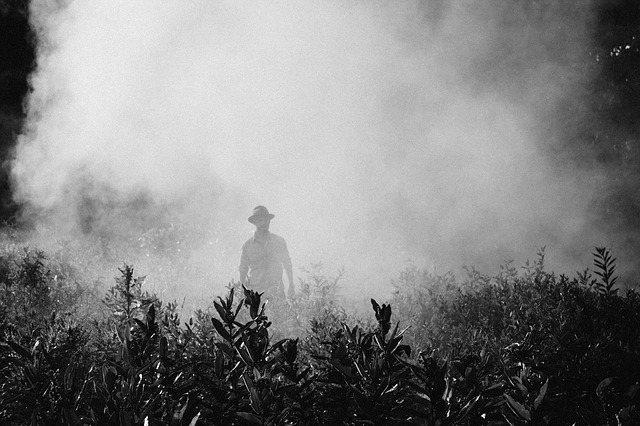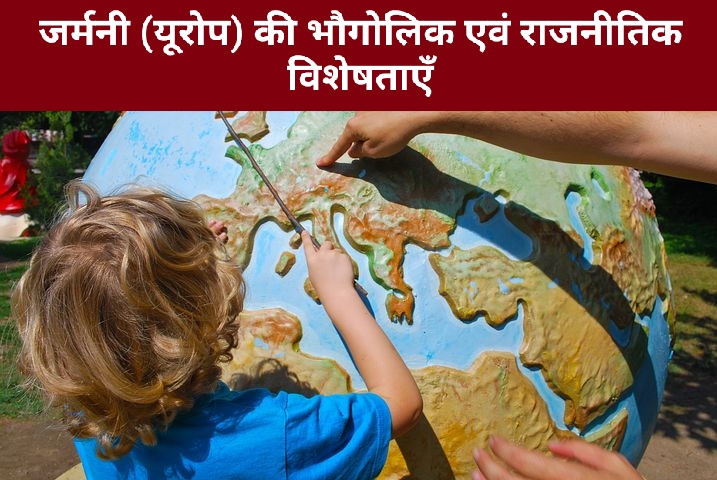
संघनन क्या है? संघनन के विभिन्न रूप || What is condensation? Various forms of condensation
Various forms of condensation - dew, frost, fog, haze, cloud, rain, snow, hail
जलवाष्प के पुनः द्रव्य या ठोस रूप में बदलने की प्रक्रिया को संघनन कहते हैं। वाष्प से बादल बन कर जल और हिम की वर्षा होती है। इसी प्रकार वाष्प से ओस, पाला, कुहरा, धुन्ध और ओले भी बनते हैं।
The process of converting water vapor into liquid or solid form is called condensation. Water and snow rain as a cloud from vapor. Similarly, dew, frost, mist, haze and hail are also formed from the vapor.
संघनन के विभिन्न रूप Various forms of condensation
संघनन की क्रिया द्वारा वायुमण्डल में उपस्थित आर्द्रता निम्नलिखित रुप में बदल जाती है (By condensation, the humidity present in the atmosphere changes as follows.)―
1. ओस (dew)- वाष्प या आर्द्र वायु ठण्डी होने के कारण ओस की बूंदों में बदल जाती है। रात्रि के समय धरती के ठण्डे होने पर वायु भी ठण्डी हो जाती है और वायु में रहने वाली वाष्प ठण्डी होने पर जल कणों के रूप में धरातल पर बनती है। पेड़-पौधों के पत्तों पर गिरने वाले यही जल कण एकत्र होकर ओस की बूँदों में बनाते हैं।
Vapor or humid air cools down into dew droplets. At night, the air also cools when the earth is cold, and when the vapor in the air becomes cold, water is formed on the surface in the form of particles. These water particles that fall on the leaves of trees and plants collect and form into dew drops.
2. पाला (frost)- वायु का तापमान 0° सेल्सियस से कम होने पर वाष्प, जल कणों में न बदल कर हिम कणों में बदल जाती है। यही कण पत्तों पर जम जाते हैं जिसे पाला कहते हैं। पाला पड़ने से फसलों को नुकसान होता है।
When the air temperature is less than 0 ° C, the vapor does not turn into water particles and turns into snow particles. These particles settle on the leaves, which is called frost. Crops cause damage to crops.
3. कुहरा (Fog)- आर्द्र वायु का तापमान घटने पर जल कण हवा में फैले धूल कणों के चारों ओर एकत्र हो जाते हैं और हवा में उड़ते हैं। ये धुएँ के बादल जैसे दिखते हैं, जिन्हें कुहरा कहते हैं। ठण्डी व गर्म वायु के मिलने पर कुहरा बन जाता है।
As the temperature of the humid air decreases, the water particles collect around the dust particles in the air and blow into the air. These look like clouds of smoke, which are called khura. Fog is formed when cold and hot air is found.
4. धुन्ध (Haze)- धुन्ध कुहरे का हल्का रूप है। धुन्ध में जल कण, धूल कणों पर जमा नहीं होते बल्कि हवा में तैरने रहते हैं। धन्ध हल्के धुएँ जैसी होती है।
Haze is a mild form of haze. In the haze, water particles do not accumulate on the dust particles, but instead float in the air. Dhan is like light smoke.
5. बादल या मेघ (Clouds)- बादल धरातल से 1 किलोमीटर की ऊंचाई से लेकर 7.5 किलोमीटर की ऊँचाई पर बनते हैं। वाष्प युक्त गर्म वायु जब हल्की होकर ऊपर की ओर उठती है और फैल कर ठण्डी होती है तो इसमें बादल बनते हैं। जल कणों के बड़े-बड़े समूह बादल या मेघ कहलाते हैं। जल कणों का घनत्व कम होने पर बादल सफेद दिखते हैं और घनत्व बढ़ने पर कालापन बढ़ता है।
Clouds are formed at an altitude of 1 km to 7.5 km above ground level. When the hot air with vapor rises upwards after becoming light and cold, it forms clouds. Large groups of water particles are called clouds or clouds. Clouds appear white when the density of water particles decreases and blackness increases as density increases.
6. वर्षा (Rain)- खुली स्वच्छ हवा में वायुमण्डलीय जलवायु का लगातार संघनन होने पर संघनित कणों के आकार में वृद्धि होती है। जब ये कण और भारी हो जाते हैं, पृथ्वी के धरातल पर गिरने लगते हैं, जब ये बूंदों के रूप में धरती पर गिरते हैं तो उसे वर्षा कहते हैं।
The condensed particles increase in size when there is constant condensation of the atmospheric climate in open clean air. When these particles become heavier, they start falling on the surface of the earth, when they fall on the earth in the form of drops, it is called rain.
7. हिमपात (Snow)- आकाश में अधिक ऊँचाई पर पहुँचने पर वाष्प ज्यादा ठंडी होने से हिम कणों में बदल जाती है। यही हिम कण धरातल पर हिम या बर्फ के रूप में बरसते हैं, तो इसे हिमपात कहते हैं। हिमपात अधिक ऊँचे पहाड़ों पर होता है।
When the sky reaches a higher altitude, the vapor gets colder and turns into snow particles. If these snow particles rain on the ground in the form of snow or ice, it is called snow. Snow falls on higher mountains.
8. ओले-(Olay) ऊँचे आकाश में तैरते हिम कण जब आपस में जुड़ कर ठोस आकार लेकर धरती पर गिरते हैं तो उन्हें हम ओला कहते हैं।
When snow particles floating in high sky join together and fall on the earth taking a solid shape, we are called hailstones.
RF competition
INFOSRF.COM
(Watch video for related information)
संबंधित जानकारी नीचे देखें।
(Watch related information below) 👇🏻

आशा है, उपरोक्त जानकारी उपयोगी एवं महत्वपूर्ण होगी।
(I hope the above information will be useful and important. )
Thank you.
लेखक
(Writer)
infosrf.com



.jpg)




